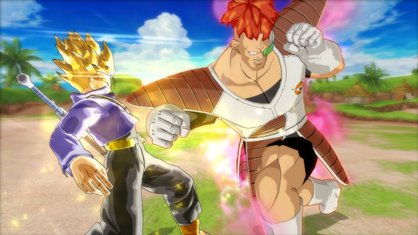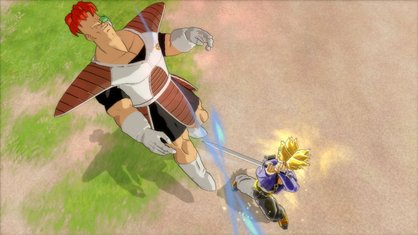Dragon Ball Z: Burst Limit - hands-on
Fights that achieve epicness, despite being significantly shorter than 4 half-hour episodes
The latest Dragon Ball Z fighting game, Burst Limit, uses next-gen power not to create ultra gritty, realistic graphics, but instead to capture the colorful and frenetic battles that epitomize the source material it’s based upon. It simply looks freshly-licked lollipop gorgeous. The characters are actually cleaner, brighter, and more smoothly animated than the show itself. Particularly during close-ups, rarely has a game looked so much like interactive anime instead of a videogame.

Of course, the illusion is helped by the well-fed roster of 20-ish characters, all speaking in the goofy, overdramatic and grammatically dubious dialogue all DBZ fans know and love. Players will get to battle against and take control of numerous characters in the main single-player mode, called Z Chronicles, which is just a fancy way of saying Story Mode. There’s actually a branching tree of stages, so once you defeat a particular foe, you can follow up with the next in numerical order, or go somewhere else, which is a nice change from the usual fighting game single-player where you hit pre-set orders or slog through random stages.
To get you used to Burst Limit’s fighting system there is a helpful Tutorial, along with a Training mode. At first the fighting seems extremely basic: you have only two regular attack buttons, one for a Smash attack and one for a Rush attack. They are sort of like the standard light and heavy attacks in many games, although that distinction isn’t entirely clear when you perform each attack. As a Burst Limit newbie or simply a casual player, the game feels like a button-mashing fest. You can pound away at the two attack buttons and you’ll find combos popping off. You’ll suddenly launch fireballs and even teleport around without doing any quarter-circle-forward type maneuvers.

The game derives its complexity from timing and tactics instead of learning six buttons and perfecting gestures. It does make use of nearly every button on the controller, but aside from the regular attacks, the rest involve activating defenses and buffing your character’s abilities. Advanced play starts with utilizing your Ki meter, which is your standard super meter, but with many uses. Filling your Ki meter allows you to unleash super moves of course, but also can be used to transform into a version of yourself that has increased attack but decreased defense, or power up your aura so you can teleport at will and fire super fireballs.
Sign up to the GamesRadar+ Newsletter
Weekly digests, tales from the communities you love, and more



